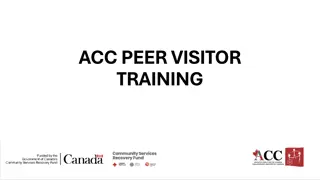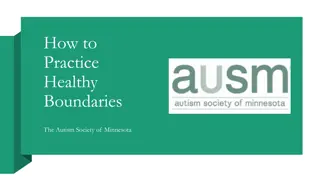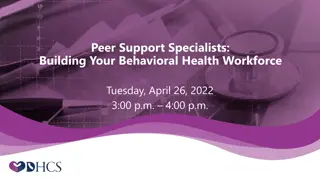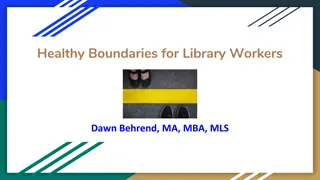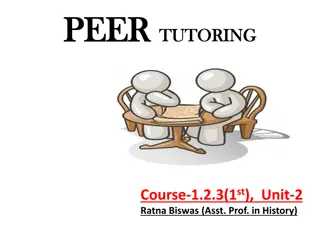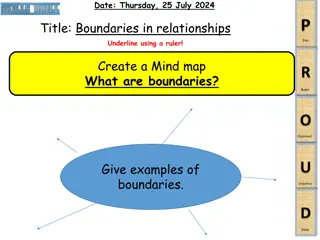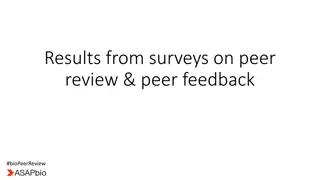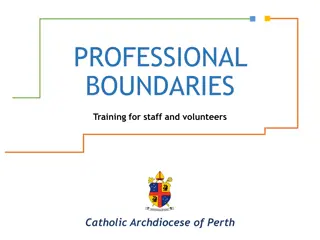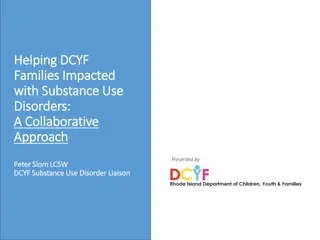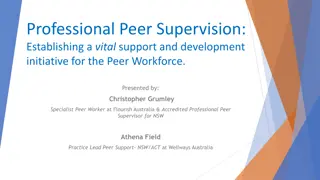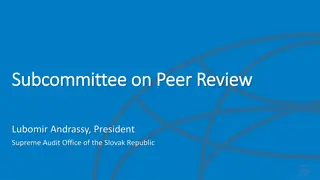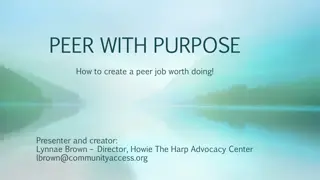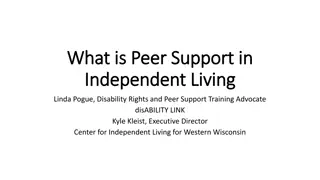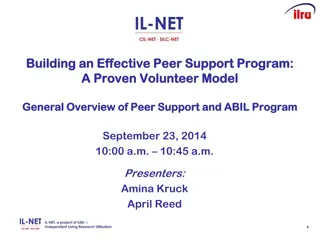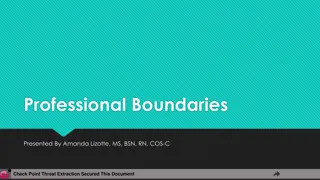Importance of Boundaries for Peer Specialists
Boundaries are essential in defining acceptable behavior and maintaining safety and trust in relationships, including peer relationships. Peer specialists should establish and communicate their boundaries effectively while respecting those of others. Tips for setting boundaries are provided, emphasizing the importance of adapting boundaries as needed and seeking guidance from supervisors or peer mentors as necessary.
Download Presentation

Please find below an Image/Link to download the presentation.
The content on the website is provided AS IS for your information and personal use only. It may not be sold, licensed, or shared on other websites without obtaining consent from the author. Download presentation by click this link. If you encounter any issues during the download, it is possible that the publisher has removed the file from their server.
E N D
Presentation Transcript
OCEACT/OSECE Peer Specialists Meeting January 10, 2022 Boundaries for Peer Specialists
Defining Boundaries Boundaries can be defined as guidelines, rules or limits that dictate legal, reasonable, safe and permissible ways for one person to behave around another. In any relationship, boundaries define what is and isn t okay. Boundaries can be firm or flexible. We typically have different boundaries with different people, depending on our relationship and level of trust with each person. Our boundaries can change at any time, depending on our situation and experience.
Boundaries Are Important They can help keep us safe. Increase trust in the relationship. Boundaries let others know how we want to be treated and how we are willing to be treated. By respecting the boundaries of others, we show that we respect them. Boundaries are part of creating structure in helping relationships.
But Wait! By definition, Peer relationships are mutual and reciprocal! Does that mean we shouldn t have boundaries?
Yes! Peer Specialists Should Have Boundaries Boundaries are an important part of EVERY relationship, not just professional ones. Peer Specialists will often have boundaries that are seen as less rigid or looser than other members of the ACT or Supported Employment team. This is an expectation of our role as a Peer Specialist. Part of our job is sharing our stories and providing information about our recovery journey. This alone would violate most advice about establishing and maintaining boundaries in a mental health setting. Just to be clear, most advice about boundaries does not take the Peer role into account. We absolutely should continue to share our stories.
Tips for Setting Boundaries Our boundaries can change over time, depending on our personal and professional experiences. We will probably have different boundaries with different participants. This may be for clinical, personal, or professional reasons. We should follow the ethical guidelines provided by our agencies or organizations. Only we can decide what our personal boundaries are. It is between us and our Supervisor or Peer Mentor to identify the best way to establish and maintain boundaries with each participant.
Tips for Setting Boundaries It is up to us, as Peer Specialists to communicate our boundaries to those we work with in a way that is respectful, supportive, and embraces the spirit of Peer Support. Part of our role as Peer Specialists is to listen for and respect the boundaries of our participants. Serious threats to a person s safety may necessitate a boundary crossing. We may need to work with our Supervisors and/or Peer Mentors to make sure we are meeting an individual s clinical need by creating a boundary where we would not have had one otherwise.
When Boundaries Are Crossed We will all work with someone at some point who will have trouble recognizing and maintaining our boundaries. This can be very typical in mental health for a variety of reasons. Symptoms, the unmet needs of an individual, not having learned how to set boundaries themselves, family dynamics, and other reasons may all contribute to boundary crossing or pushing boundaries. As Peers, it would be wonderful if we could encourage everyone (as a society) to move away from using the words Boundary Violation or Boundary Stomping . Learning to set and keep boundaries is a skill just like any other.
Tips for Keeping Boundaries Figure out what your boundaries are before they are ever tested by you or others. This worksheet from PDA may help: https://recoverylibrary.com/content/616dcfc2478deec97e0000b2 Exploring My Disclosure Boundaries Work with your Supervisor or Peer Mentor to help you figure out where your boundaries are at and how to communicate them to others. Practice! Role play with another Peer or team member, or run through possible scenarios in your head to practice what you would say to establish or reinforce a boundary.
Tips for Keeping Boundaries Try to avoid the side-step . When someone asks you a question that would push or cross a boundary, we are taught to respond with Why would you ask that? , redirect, or change the topic. Instead, use I statements and let the person know that they didn t do anything wrong by asking the question.
Pat Deegan s Algorithm For Boundaries In her research, Pat found that many people report being hurt by professionals when they communicate about boundaries. This was especially true for those new to the system. Professional Boundaries should be: Consistent Flexible Co-created We all have personal and professional limits that we need to balance with a person s ability to feel connected with us. . . . [T]he task here is to think about boundaries as a means to building relationships that are going to support individuals in their recovery. Pat Deegan
Pat Deegan s Algorithm For Boundaries Ethics Making sure that participants are safe, not being exploited. Role Expectations As Peers, it is expected that we disclose our recovery story. Clinical Concerns These are very specific to each participant and NOT related to a diagnosis. Personal Limits These are up to us. Client Preferences These are up to the individual participant.
Pat Deegan s Algorithm For Boundaries You can watch the full training here: https://mhttcnetwork.org/centers/northwest-mhttc/product/recovery- oriented-practice-webinar-series-patricia-e-deegan-phd-0 You can find a worksheet for this method here: https://recoverylibrary.com/content/59dd03b13aa17446d30001f1
References Boundaries copy. MyCASAT. (n.d.). Retrieved January 6, 2022, from https://www.mycasat.org/topic/boundaries-2/ Pat Deegan PhD & Associates, L. L. C. (n.d.). Exploring My Disclosure Boundaries. Recovery library. Retrieved January 7, 2022, from https://recoverylibrary.com/content/616dcfc2478deec97e0000b2 Pat Deegan PhD & Associates, L. L. C. (n.d.). Boundary Decisions. Recovery library. Retrieved January 7, 2022, from https://recoverylibrary.com/content/59dd03b13aa17446d30001f1 (2021). Recovery-Oriented Practice Webinar Series with Patricia E. Deegan, PhD. Session 2: A Recovery-Oriented Approach to Professional Boundaries | Mental Health Technology Transfer Center (MHTTC) Network. Retrieved January 5, 2022, from https://mhttcnetwork.org/centers/northwest-mhttc/product/recovery- oriented-practice-webinar-series-patricia-e-deegan-phd-0.


